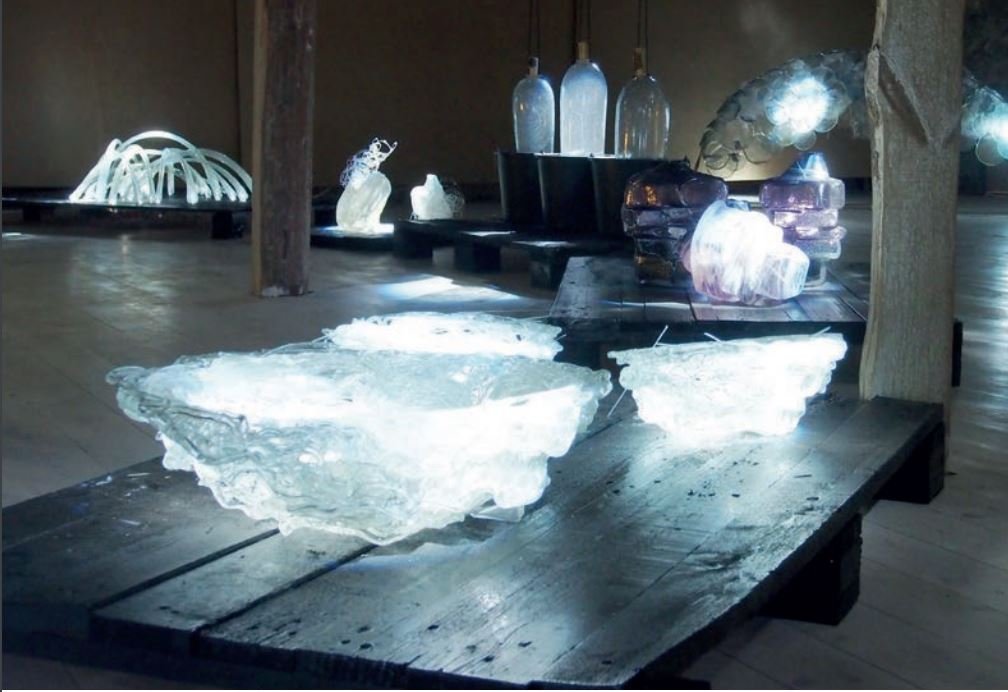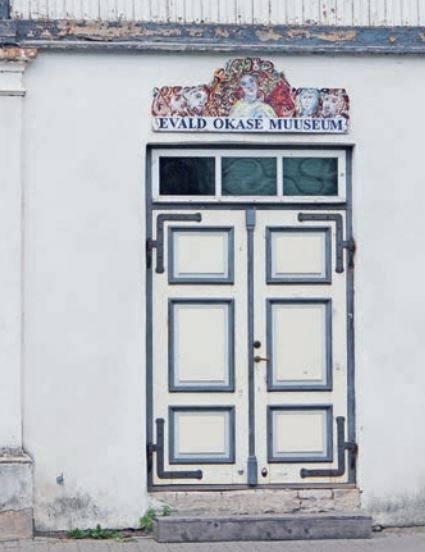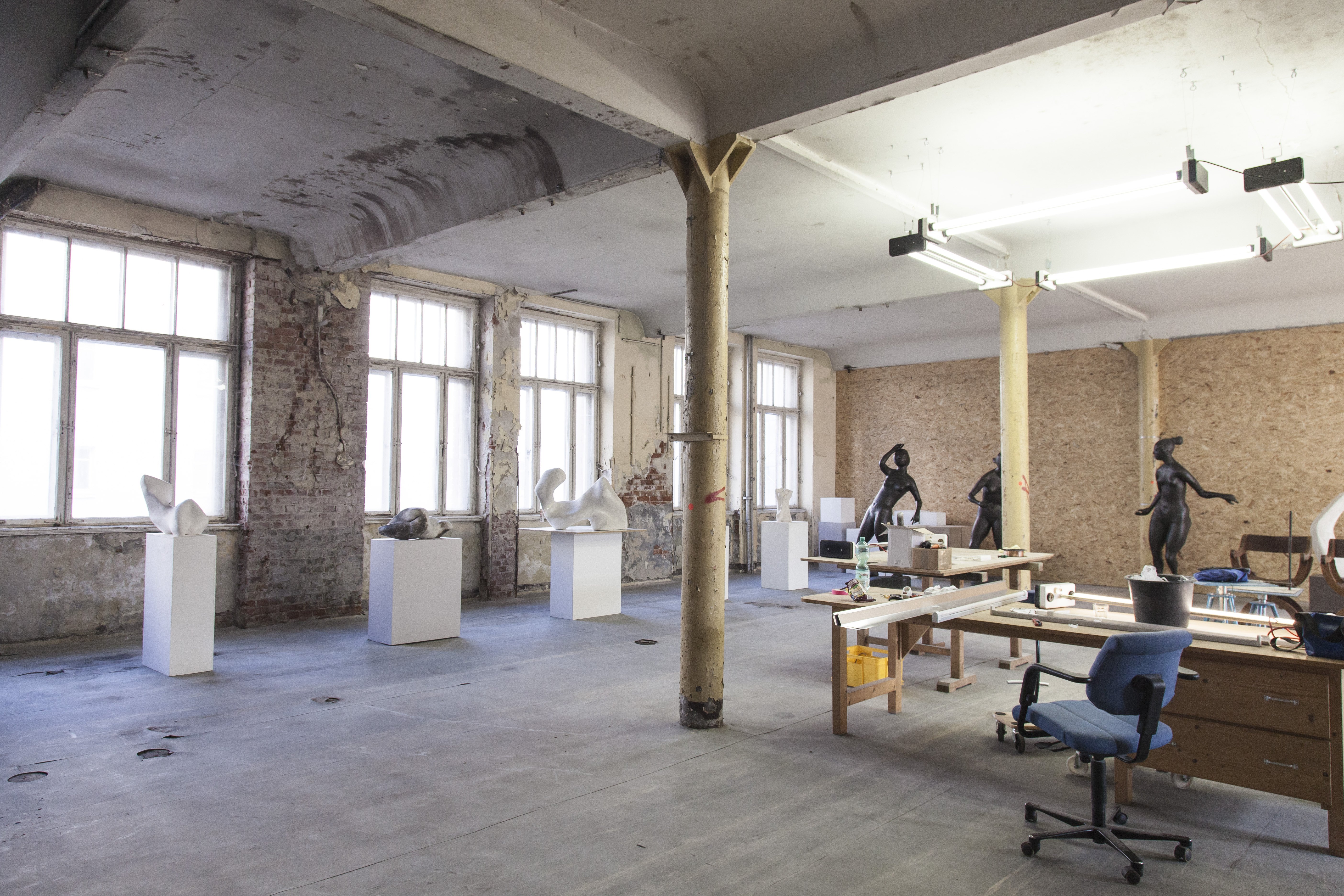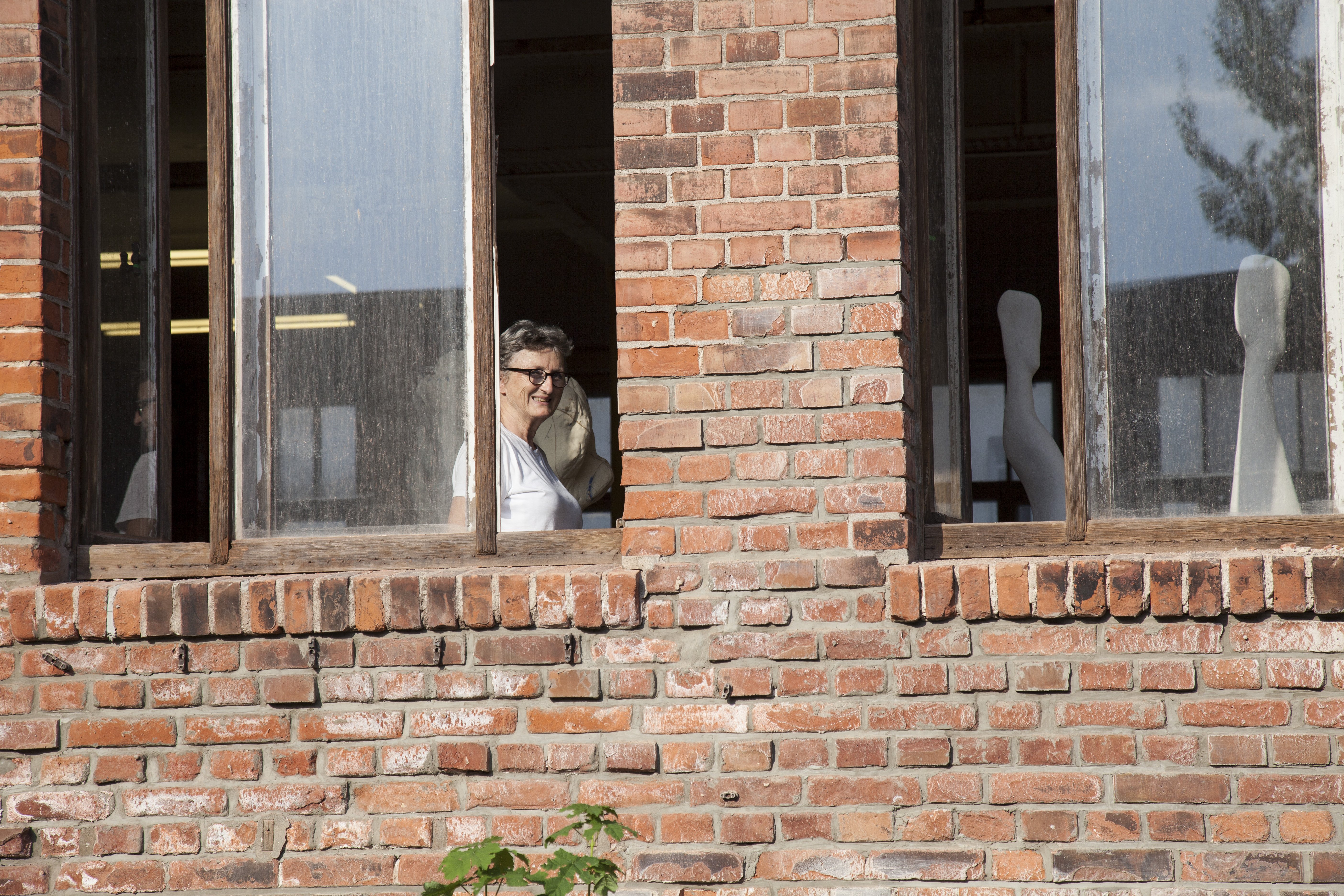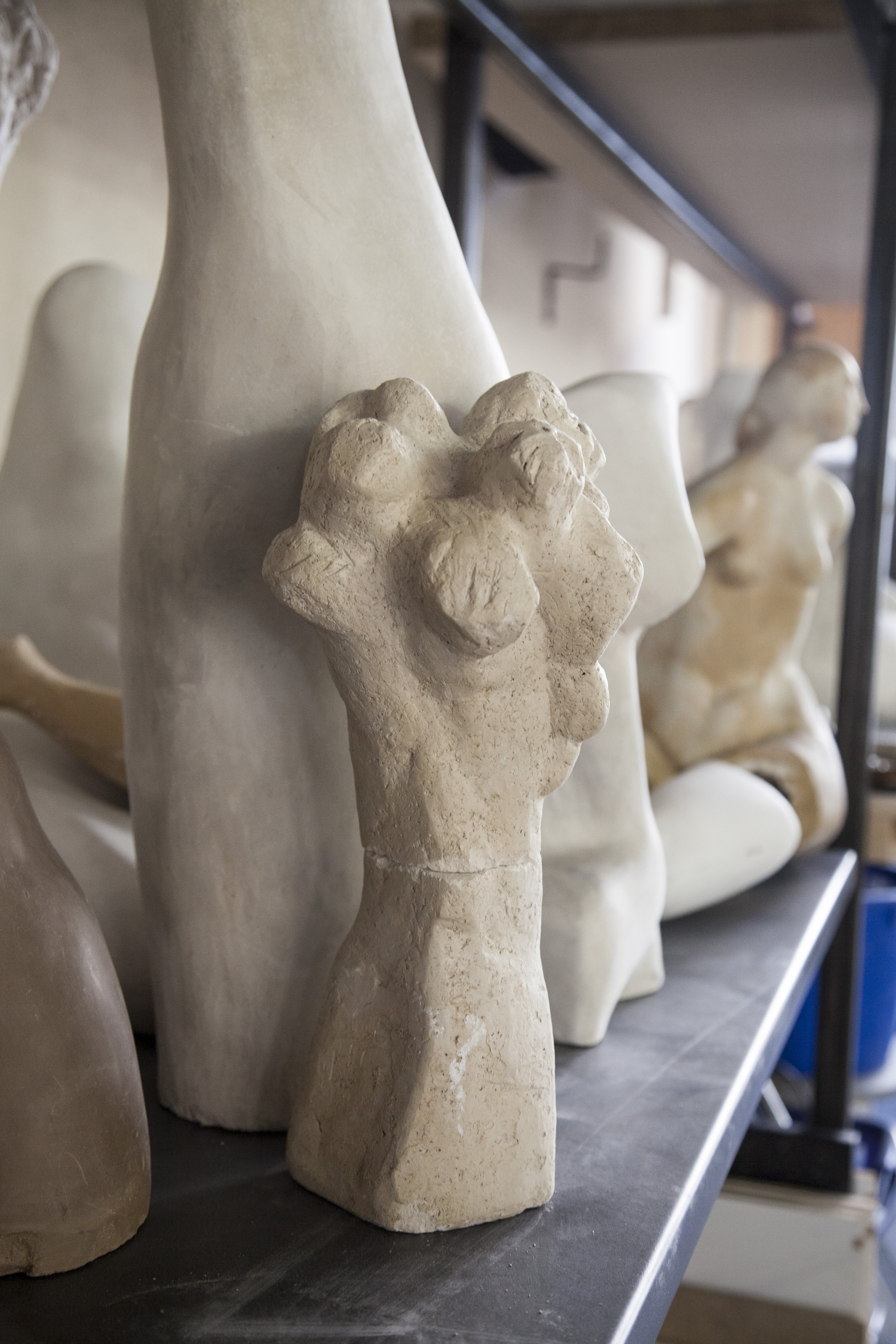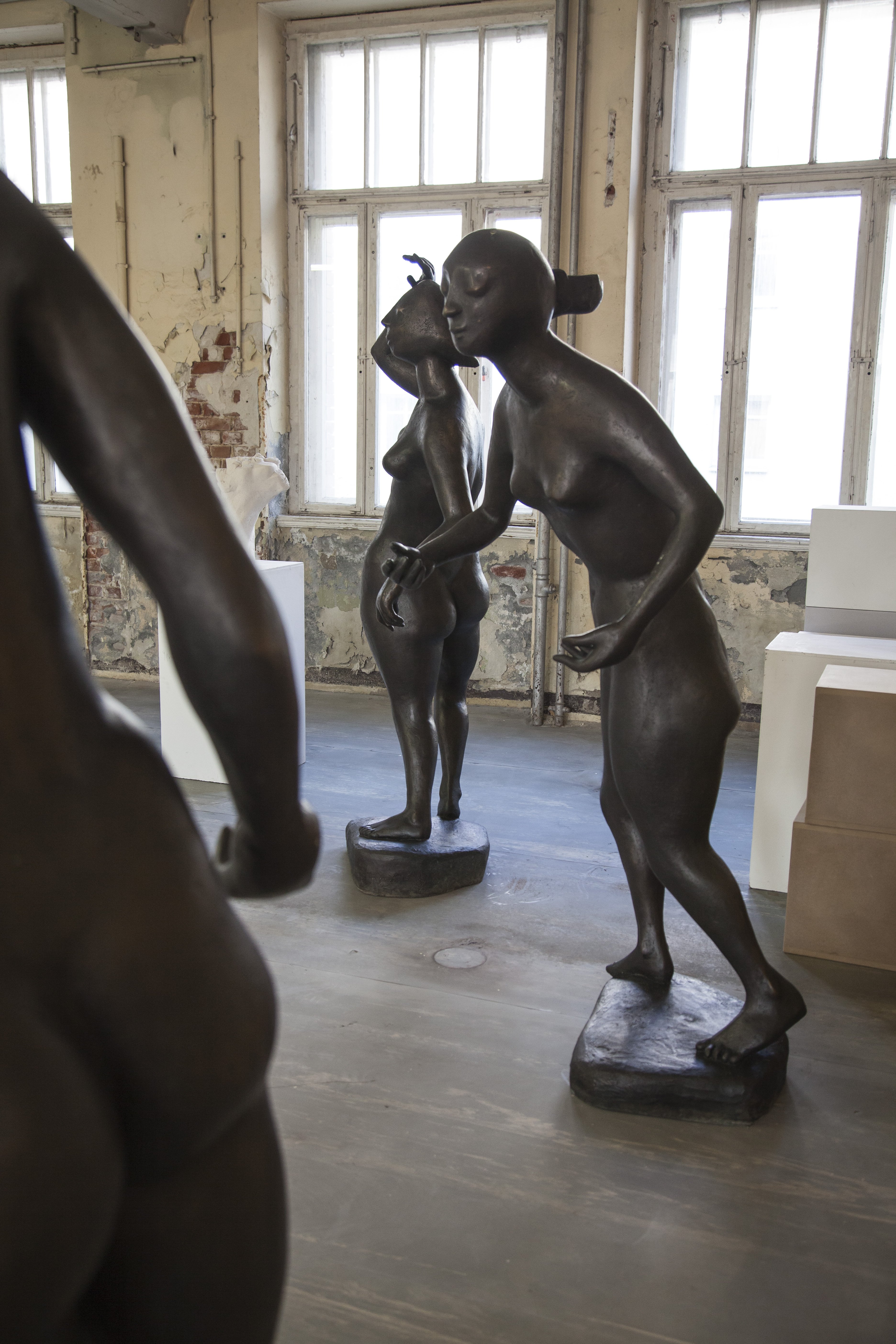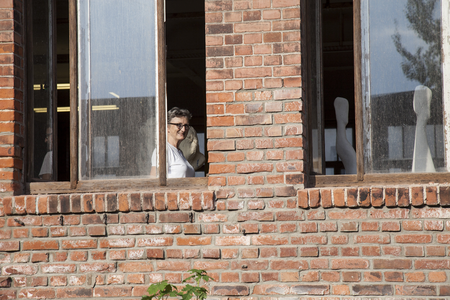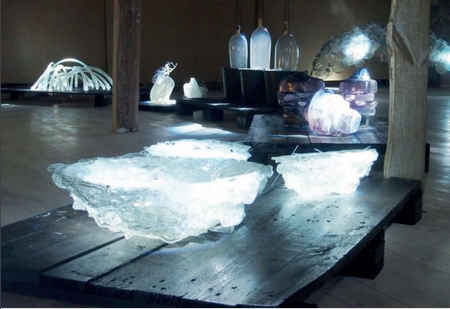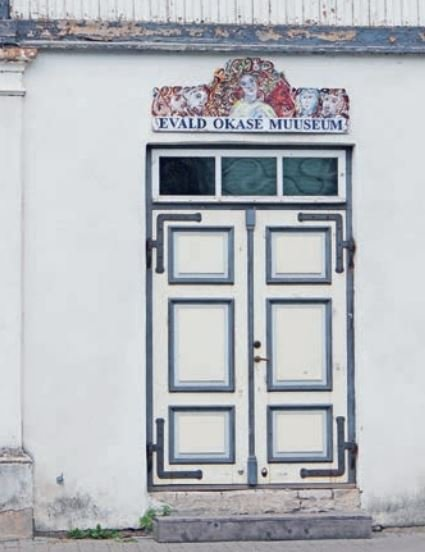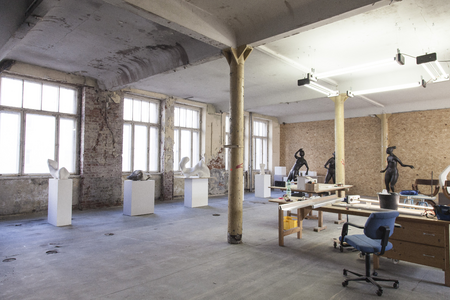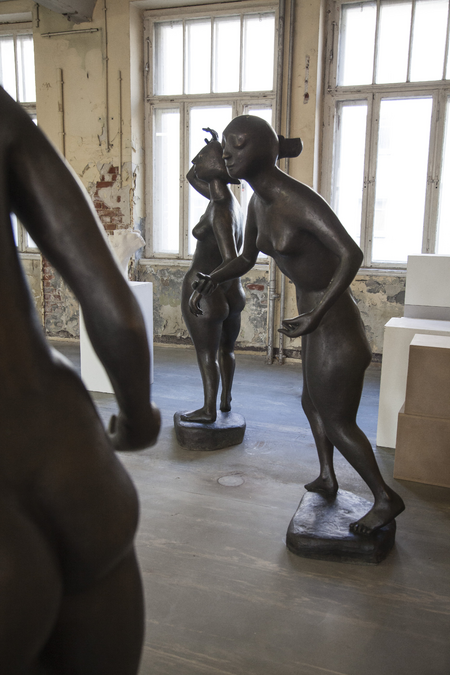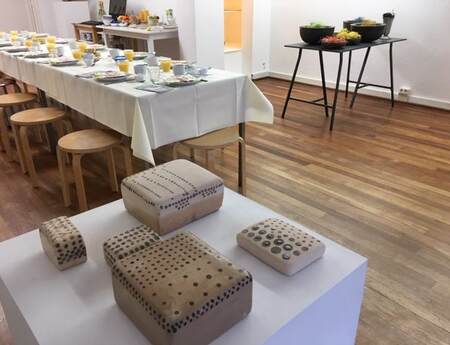Interview with Cornelia Hammans
We met with Cornelia Hammans, sculptor and member of the board of sculpture network, for an interview in her new hometown of Leipzig and joined her for an exclusive tour of her newly occupied studio in the Saxon village of Zeitz.
For the interview we met in Cornelia Hammans’ apartment in the bel étage of a stately building from the Gründerzeit (1870’s) in the western part of Leipzig. Despite the fact that she has just moved in, we are sitting in a tastefully decorated living room, surrounded by a few of her sculptures. In the future her apartment will also serve as her exhibition space.
Cornelia, for decades your life and work was centered around Munich and Gmund near the Tegernsee. What made you decide to move to Leipzig?
Bavaria is a beautiful area and Munich is a comfortable and idyllic city. But one weekend when I was visiting my son and his family here in Leipzig, my eyes were suddenly opened: We were sitting in a restaurant and all around us were young families with their children and their strollers – there was a lively, vibrating atmosphere that you could feel throughout the city. In Munich you mainly notice the number of wheeled walkers parked. As a result I was seized by the irrevocable decision that it was time to make a new start and that I needed to move to a more lively and energetic area. The city of Leipzig and its surroundings are the ideal location.
How do you arrange such a move – especially in consideration of all the heavy machinery and materials that you need to create your sculptures?
As a matter of fact it was a big effort logistically to clear out a house that one has lived in for decades and a workshop where one has worked for a long time. But the same basic question applies for both the household and the shop: What will I take with me and what will I get rid of? For me there was something symbolic about my decision to destroy 20 clay figures before starting this new chapter of my life. What am I supposed to do with all this old stuff? The clay figures are just models that I give to the foundryman for casting the bronze. During a move you are forced to consider what’s important and what’s not. In the end, I only took the final bronze sculptures to Leipzig with me.
| „The decision to destroy 20 clay figures was symbollically important for this new chapter of my life - what should I do with that old stuff?“ - Cornelia Hammans |
In the meantime Cornelia Hammans has set up her studio in Zeitz, 40 km from Leipzig. Since German Reunification Zeitz is best known for its considerable decline in population, as well as the deserted industrial buildings and decaying houses. Cornelia Hammans’ studio is 200 m² of space located on the ground floor of a former noodle factory – which is lovingly known as „The Noodle“. „The Noodle“ was bought by investors from Heidelberg in order to create a cultural center. The building has a very individual charm - this is due to collapsed areas of the building, crumbling plaster and rooms with a haunting atmosphere. A small team is renovating the premises - a time consuming process. Cornelia Hammans is the first artist to move into a studio here.
Your studio, now located in an old factory, is almost completely set up. What made you decide to move your studio to such an unusual location?
When searching for a location for my new studio in Leipzig, I first inquired at the cotton mill in Plagwitz if there was a free spot. The mill has been a well-known and popular creative space since the beginning of the millennium and is home to a number of galleries, studios and artistic areas. But at the moment there is an acute lack of space and studios of this size are filled up for the next five years. But through friends I managed to get the telephone number of an investor who had bought this old noodle factory in Zeitz. Their vision is to convert the building into a creative space much like the cotton mill. There have already been a few attempts to breathe new life into the factory. For example, a 12-member artists’ collective presented something in the Noodle last year. This group is constantly wandering, looking for new and inspiring locations for their work.
What are you hoping to find in this new and unusual location?
I am the first artist to move into ‘the Noodle’ permanently – but many more will follow in the near future. The location and the atmosphere here is unbelievable. There is already a need for this kind of space in this part of Germany. In that respect Zeitz has a considerable advantage in terms of location.
Plus, there is the fact that Zeitz will benefit from the international attention and the publicity that the cotton mill receives every year during their spring and fall open house. One vision would be to enter into a long-term cooperation with the cotton mill - after all Zeitz is located just 30 minutes by train from the Plagwitz train station.
And was is the significance of this new beginning for you as an artist?
In a personal sense I am mainly hoping for new inspiration. But not just for my own art and my artistic creations, but also for a close and intense cooperation with other artists. Either working together in creative surroundings or even just to have the opportunity to help make this area ready for other artists. For example, I could imagine calls such as an Artist-in-Residency Program, something that could be announced on sculpture network’s Opportunities page and which could be attractive for our members.
And, lastly, I also hope to be able to attract new collectors and admirers for my sculptures. I have repeatedly run into collectors who stress the importance of Leipzip and the surrounding area as a location for young and promising art, in addition to well-established artists. It all started in the early 90's when Leipzig and the Leipziger School suddenly became the center of attention for the art world.
Aren’t you worried about being forgotten by your customers and fans?
At the moment I can’t complain! It is interesting to see that scarcity can have the effect of focusing attention. And besides, I am lucky to have a reliable network of family, friends and enthusiastic collectors during the difficult times - and there have been some over the years.
During our conversation it becomes apparent that Cornelia Hamanns has a „do-it-yourself“ artistic personality. With her organizational talent, hard work, ability and, not least, courage she has been able to create a name for herself.
She has also expressed criticism about the rigid rules that dominate the art world. During an exhibit in Hong Kong few years ago a well-known gallery owner was interested in her work and was very enthusiastic about her sculpting and artistic abilities. But due to her lack of a classic academic education as an artist he hesitated to add her to his program. Then, at a certain point in time, she made a conscious decision to pursue her path as an artist without a gallery representative.
What are you working on at the moment?
I am working on a series that I call ‘Nature Pieces’. I find my inspiration for these pieces in nature: Even in the Rhineland – where I grew up – I was fascinated by the common white willow - among other things - which shapes the landscape. I have been noticing them around here too. In my sculptures I express this majestic force that is inherent in natural objects. The object shifts more to the center of my attention, thus I am returning to my beginning, so to speak.
How did your newest exhibit in the framework of the Faust-Festival in Munich in the Künstlerhaus come about?
I was repeatedly asked if a certain sculpture from my series ‘Nature Pieces’ is supposed to look like a fist. That seems logical since I was trying to show the power of nature. That’s how the connection to the Faust Festival became clear and that’s how I was able to secure both the exhibit in the courtyard of the Künstlerhaus and in the entrance of the Bayerischen Hof Hotel.
Do you think of your job more as work or fun?
I can say with complete conviction that my job is fun. Due to all the organizing for the move I haven’t been able to work for weeks. Now I am just itching to put on my studio smock and get started - I can hardly wait.
One year ago you became a member of the board of sculpture network. What do you particularly like about sculpture network and the work they do?
The undiminished enthusiasm sculpture network has to push forward and the versatility of the organization. Whether it is the calls or, now even more, the art trips they offer. The trip with sculpture network to Antwerp two years ago was one of the best cultural trips I’ve ever been on. As a member of the board and a representative of sculpture network it’s a great joy for me to talk about the work they do and to spread the word about this wonderful organization.
| „Die Reise von sculpture network nach Antwerpen vor zwei Jahren, war eine der besten Kulturreisen, die ich je mitgemacht habe.“ - Cornelia Hammans |
(Photo Credit: Khira Rudolph)
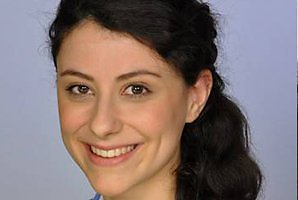
Autorin: Christina Würtenberger
Christina ist unsere Ausschreibungsexpertin und hat für uns das Windkunstfestival besucht.
Wenn nicht anders gekennzeichnet stammen die Fotos von der Autorin.
